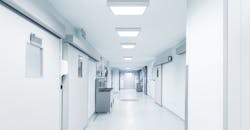Human-Centric Lighting Market Expected to Exceed $6 Billion by 2024
According to a recent report from Global Market Insights, Inc., the human-centric lighting market is expected to exceed $6 billion by 2024, with a projected CAGR of 25% over 2019 to 2025.
The increasing adoption of smart lighting technology in commercial and residential applications to gain energy efficiency benefits is driving the industry growth globally, notes the report. The circadian rhythm-based lights aid in reducing visual and non-visual harms to humans and offer improved productivity in industrial and enterprise applications. Additionally, the growing focus on the adoption of controllable, body-centric, and low-power consuming lights due to government initiatives and consumer awareness is creating several opportunities for the human-centric lighting market.
Lighting fixtures and software are gaining high demand in the human-centric lighting market globally due to the installation of fully transitional and controllable systems in new commercial, industrial, and healthcare facilities. The software used in these systems allows users to control and change the light settings, color, and brightness levels depending on the requirements. The service segment including professional, managed, and consulting services is witnessing high popularity due to increased awareness of application industries and initiatives for adopting body dynamic light solutions. New building owners and enterprises are taking expert consultation for deploying suitable lighting solutions, further developing the service segment in the human centric lighting market.
In the human centric lighting market, the health care segment is experiencing high growth prospects due to health-related benefits associated with it. These light systems aid in appropriately setting the sleep-wake cycles of patients through changing light patterns throughout the day. The maintenance of circadian cycles prevents patients or elderly care occupants from depression, anxiety, and several other behavioral conditions. The color, brightness, and temperature-varying features offered through tunable fixtures in these systems support human psychology and sleep-wake cycles, resulting in health improvement of elderly care residents and patients while also enhancing health care facilities, further driving the human-centric lighting market demand. Several hospitals and elderly care centers across the globe are adopting HCL technology to add natural illumination features to their facilities. For instance, in July 2018, Medical Behavioral Unit at Children's Hospital of Philadelphia announced that it adopted circadian lighting systems to set up better sleep-wake cycles of its patients.
Other areas expected to see traction in the human centric lighting market is Europe in the commercial, residential, and healthcare sectors, due to the growth of infrastructure refurbishment.
To read more details on this subject or to see key companies active in the human-centric lighting space, view the original report.
